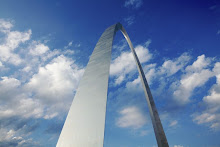The American Plate Project continues, but even as I explore the wide range of the foods the contributed to modern American cuisine, certain subsets draw me into their gravitational pull. Cake is mentioned twice on the American Plate Project list, and that's no accident. Americans love their sweets, and have been baking cakes since we first set foot on these shores.
It's common knowledge among my friends and loved ones that baking is a particular hobby of mine, so when I received
American Cake (by Anne Byrn) for Hanukkah, it was "gently" suggested that I expand my food project by examining the history within. Of course, there's no better way to examine cake history than by baking the recipes in the cake history book.
Much like
The American Plate, this book is split into different eras of time:
1) 1650-1799: Baking Cakes in Early America
2) 1800-1869: New Cakes & New Directions
3) 1870-1899: A Scientific Approach: Baking Powder & Fannie Farmer
4) 1900-1916: Birth of the American Layer Cake
5) 1917-1945: Baking in the Good Times & the Bad Times
6) 1946-1962: Tupperware, Bake-Offs, & a New Domesticity
7) 1963-1979: American Cake Times Are a-Changin'
8) 1980-1999: Cakes Born in the USA
9) 2000 to the Present: The Cakes of the New Millennium
Some of these chapters may have overly cutesy names, but this looks like a pretty natural breakdown of history, both food-related and otherwise. The rules for the American Cake project are similar to its cousin:
#1: No need to work from beginning to end. I can tackle these in whatever order is most convenient.
#2: I have to do my best to make these cakes in the spirit in which they were intended. If the people of that time period just couldn't enjoy a cake without walnuts in it, then the cake gets walnuts, even if they're not my favorite addition.
#3: There are some cakes that I can tell from the outset I won't enjoy. Simple solution: Find someone who will. Cakes make great gifts, after all.
#4: I'll do my best to use any specialized ingredients or equipment, but in some cases, it may be impossible. In those instances, I'll either get as close as I can, or will substitute something that isn't in the book, but that I personally feel is an important American cake.
Time to get cracking! I sense a lot of flour purchases in my immediate future.
Cakes Accomplished
Cake #1:
American Gingerbread
Cake #2:
Chocolate Stout
Cake #3:
Martha Washington Great Cake
Cake #4:
Classic Pound Cake
Cake #5:
Shoofly Pie
Cake #6:
Strawberry Shortcake
Cake #7:
Lemon and Molasses Spice Marble Cake
Cake #8:
Granny Kellet's Jam Cake
Cake #9:
Scripture Cake
Cake #10:
Chez Panisse Almond Torte
Cake #11:
1-2-3-4 Cake
Cake Ranking
#1: American Gingerbread
#2: Martha Washington Great Cake
#3: Alaska Rhubarb Cake
#4: Pineapple Upside-Down Cake
#5: Chez Panisse Almond Torte
#6: Louisiana Syrup Cake
#7: Lois's Original Plum Torte
#8: Ocracoke Fig Cake
#9: Mary's Cherry Upside-Down Cake
#10: Strawberry Shortcake
#11: 17th-Century Cheesecake
#12: Shoofly Pie
#13: Moosewood Cardamom Coffee Cake
#14: 1917 Applesauce Cake
#15: Fraunces Tavern Carrot Tea Cake
#16: George Washington Carver's Peanut Cake
#17: Beet Red Velvet Cake
#18: Lazy Daisy
#19: Julia Child's Queen of Sheba Cake
#20: Chocolate Stout
#21: Mary Lincoln's White Almond Cake
#22: Chocolate Earthquake Cake
#23: French King Cake
#24: Bangor Brownies
#25: Hershey Bar Cake
#26: Lemon and Molasses Spice Marble Cake
#27: Cold Oven Pound Cake
#28: New Orleans King Cake
#30: Granny Kellet's Jam Cake
#31: Cinnamon Flop
#32: Cowboy Cake
#33: Brown Derby Grapefruit Cake
#34: Malinda Russell's Washington Cake
#35: Classic Pound Cake
#36: 1-2-3-4 Cake
#37: Scripture Cake
#38: Angel Food Cake




















